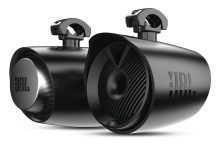Before stowing watercraft, inspect safety and mechanical equipment.
Fall marks the end of boating season for many in Northern Arizona and as owners prepare to stow their watercraft until the spring, it’s an ideal time to inspect life jackets, safety gear and mechanical equipment. Getting repairs done in the offseason and taking stock of safety equipment will help ensure a successful start to the 2018 boating season — and it’ll give you a few more quality hours with the boat before storing it.
 “Take advantage of the end of the boating season to look for anything that may need repairing and to take inventory of life jackets and other safety gear,” said Josh Hoffman, boating-safety education coordinator for the Arizona Game and Fish Department. “By doing this now, you will have a head start in the spring and can make sure all the mechanical equipment is working properly and that all safety gear is stored correctly.”
“Take advantage of the end of the boating season to look for anything that may need repairing and to take inventory of life jackets and other safety gear,” said Josh Hoffman, boating-safety education coordinator for the Arizona Game and Fish Department. “By doing this now, you will have a head start in the spring and can make sure all the mechanical equipment is working properly and that all safety gear is stored correctly.”
The following steps will help ensure the boat or watercraft is stored properly for next year and you’re ready to safely hit the water in 2018:
- Inspect life jackets for any rips, tears, mold, mildew and worn areas. Also check to see whether the label is still readable before storing life jackets in a dry location. Arizona’s climate is tough on life jackets, and on average they need to be replaced every five years. If you own an inflatable-type life jacket visually check to ensure there are no rips, tears, excessive abrasion or holes, all seams are securely sewn, and the cover, straps and hardware are still strong. It would also be a good idea to test the inflatable for leakage. Orally inflate your life jacket until firm and then let it sit inflated for 16 hours. A life jacket with a leak in it will not hold its firmness and should be replaced.
- Check the fire extinguisher to ensure it’s sufficiently charged. If not, make a note to recharge or replace it before the next boating season or your next outing.
- “Don’t move a mussel” —As every watercraft owner should do every time he or she leaves the lake, pull the vessel’s drain plug, and dry and clean the hull. Doing so helps prevent the spread of aquatic invasive species like quagga mussels.
- Make sure propellers are free of dings, pitting, cracks and distortion, and that they are secured properly. Inspect the hull for blisters, distortions and cracks.
- Check the fuel system for any leaks or damages, giving special attention to fuel lines and connections. Damaged fuel hoses could either be cracked, brittle or soft. Also ensure the engine exhaust and ventilation systems are functioning properly. As with fuel lines, inspect all belts, cables and hoses that may have been damaged during the season. Ensure belts are fitted tightly and that there are no cracks on the outer jacket of the throttle, shift and steering control cables.
- Brush up on your boating knowledge by taking one of the Arizona Game and Fish Department’s free safety courses. The classes are offered in Phoenix and Lake Havasu City every month to provide boaters with the information and tips needed to stay safe while on the water. Get more information and sign up for a course online.
For more information about storing your boat or watercraft during the offseason, BoatUS has numerous articles covering topics like tips for storage on the water as well as a checklist detailing the steps to winterize a boat.































